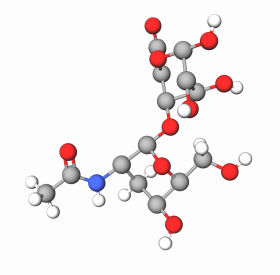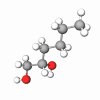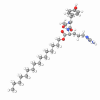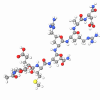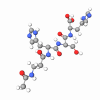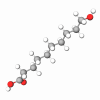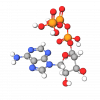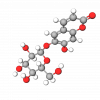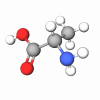Hyaluronic acid (HA)* is a prominent component of diverse anti-aging beauty formulations. This ingredient is commonly found in many highly effective moisturizers, creams, and serums, as well as popular injectable fillers. So why do HA-containing products deliver results? And why do celebrity skincare companies extensively include this compound in their advanced creations? First, let's discover the secret of Hyaluronan's extraordinary success.
This high-profile compound is an integral part of the human skin extracellular matrix (ECM, the mass between the cells). Along with collagen and elastin, Hyaluronic acid forms the scaffolding of the dermal tissue. Its primary function is the hydration of the tissue. HA can attach and hold colossal amounts of water molecules. It prevents dermal dehydration, consecutive wrinkling, and sagging. Unfortunately, intrinsic and extrinsic aging of the uppermost layer of our body leads to a drastic decrease in Hyaluronan content. The obvious result of this process is the formation of fine lines and coarse wrinkles. Sounds frustrating, isn't it? The good news is both topical application and intradermal injections of Hyaluronan combat water loss with remarkable effectiveness. It is a potent humectant and does stellar work on the surface and inside the epidermis, depending on its molecule size (smaller forms properly permeate deeper and moisturize skin from within).
Hyaluronic acid's beneficial potential is not limited to its humectant activity. It also:
- activates the production of collagen and elastin, the most important structural proteins in dermal tissue. As a result, it recovers skin volume, plumpness, and firmness.
- Demonstrates antioxidant and anti-inflammatory properties, catches and neutralizes hostile free radicals, and inhibits the cascade of inflammatory processes. Thus, it fights photoaging and inflammation,
- supports wound healing and tissue restoration.
Hyaluronic acid's excellent benefits made it a subject for large-scale scientific research. Its outcome clearly states the outstanding effectiveness of HA in wrinkle correction, skin hydration, and turgor improvement.
*Also known as Hyaluronan or Sodium hyaluronate.
What is Hyaluronic acid?
Hyaluron - an active ingredient that has long been used in cosmetics. And yet the term has become particularly well established in recent years. When talking about hyaluron, the keyword Anti-Aging lights up for most care-conscious people. But what exactly is hyaluron?
Hyaluron or hyaluronic acid is an essential component of the human body. It is necessary for strength and stability. Without hyaluronic acid, our skin cannot bind enough moisture, and without water, the ability of fibroblasts to produce building blocks of beauty is severely limited. In chemistry, hyaluronic acid is classified in the substance class of glycosaminoglycans and is a carbohydrate.
Hyaluronic acid in cosmetics
Initially, the acid was used in medicine to treat wounds and scars. Hyaluronic acid also stimulates the growth of new cells. Together with collagen and elastin fibers, it forms the extracellular matrix in the connective tissue of the skin. It supplies essential nutrients to the collagen, is responsible for the skin's elasticity, and keeps it moist and elastic. However, the critical thing about hyaluronic acid is that it can increase its volume many times over, like a sponge, thanks to its enormous moisture storage capacity.
Due to the ability of hyaluronic acid to store many times its weight in moisture, the skin is padded from within. As a result, it receives new freshness, elasticity and looks plumper and younger. Hyaluronan is, therefore, an effective active ingredient in the fight against wrinkles. In addition, it provides the skin with the much-needed moisture and supports its elasticity.
